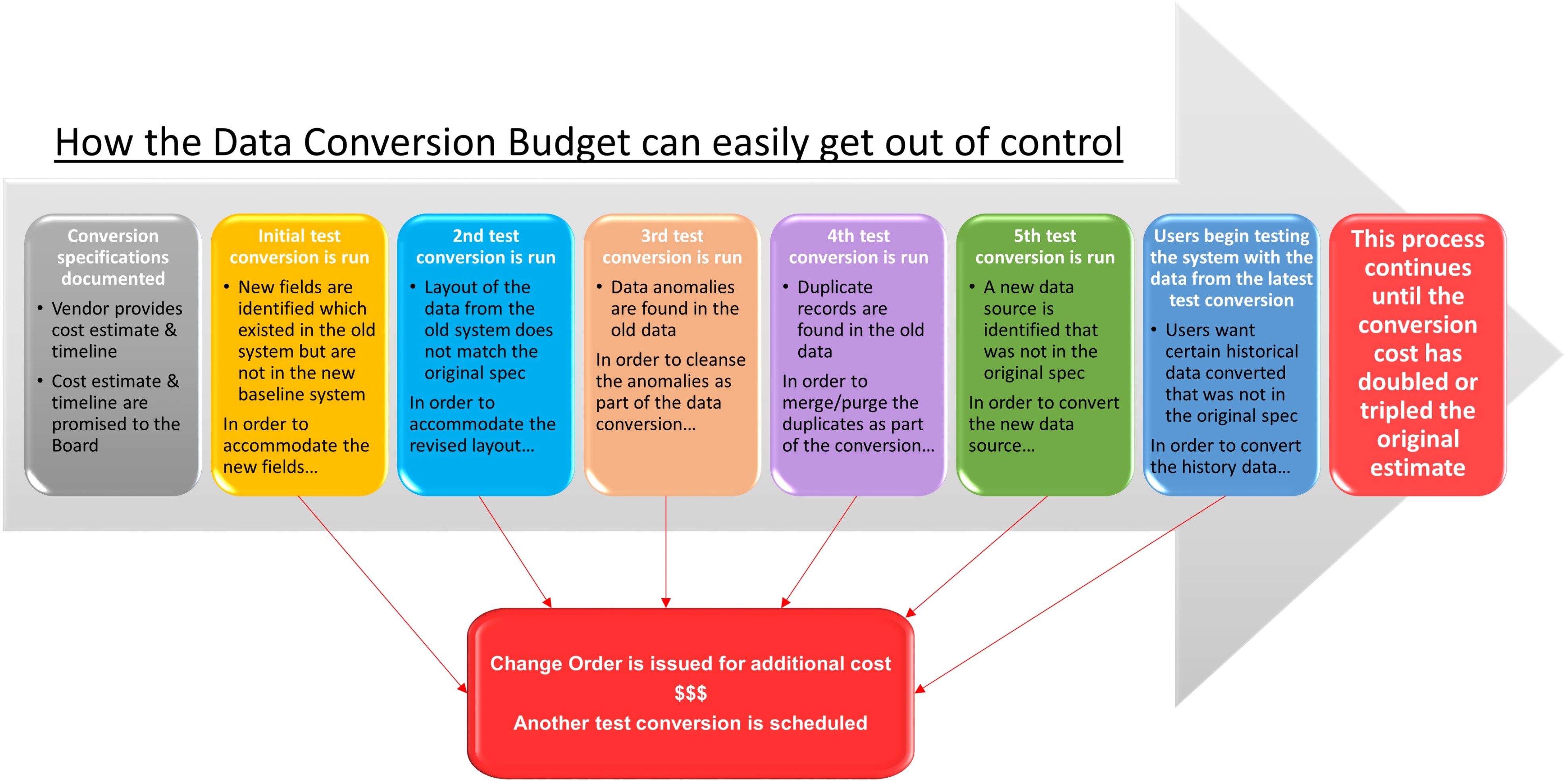Why are Failures so Common?
- Risks Not Identified
- Business Processes Remain Unchanged
- Budget & Timeline Expectations Not Met
- Budget & timeline promises made too early
- Inaccurate price quote
- Business process changes not identified early enough
- Scope of integrations not adequately defined up front
- Lack of detailed project plan
- Not enough client resources devoted to the project
- Approval of unnecessary customizations
- Scope creep during testing and training
- Data conversion specs not adequately defined
Data conversion specs not adequately defined
Data conversion specs not adequately defined
The vendor provides a price estimate for the data conversion, but it ends up costing 2-3 times more. The data conversion effort seems endless, with an exorbitant number of problems and open issues. The level of effort required for data conversion may not be properly understood. It is a very common problem, particularly in a new AMS project, and it may not be the vendor’s fault.
How the Framework helps control the cost of data conversion
The most important step in the above diagram is the first one. If you get the conversion specifications right, the scope creep depicted by the subsequent boxes can be avoided. The Framework leads you through the best practices for planning and executing the data/content conversion. It explains how staff from each department need to participate in decisions about what should be converted (which transaction files, how much history, etc.), and formulate a plan to cleanse the legacy database of duplicate records and data anomalies prior to the test conversions. The Framework’s Test Plan explains in detail how subject matter experts should reconcile the data to ensure that it was properly moved from the old system to the new. The endless costs that many associations endure in their data conversion efforts can be controlled by following the Framework’s prescribed procedures and guidance.
Contact us to learn more about the
IT Guidance Framework



